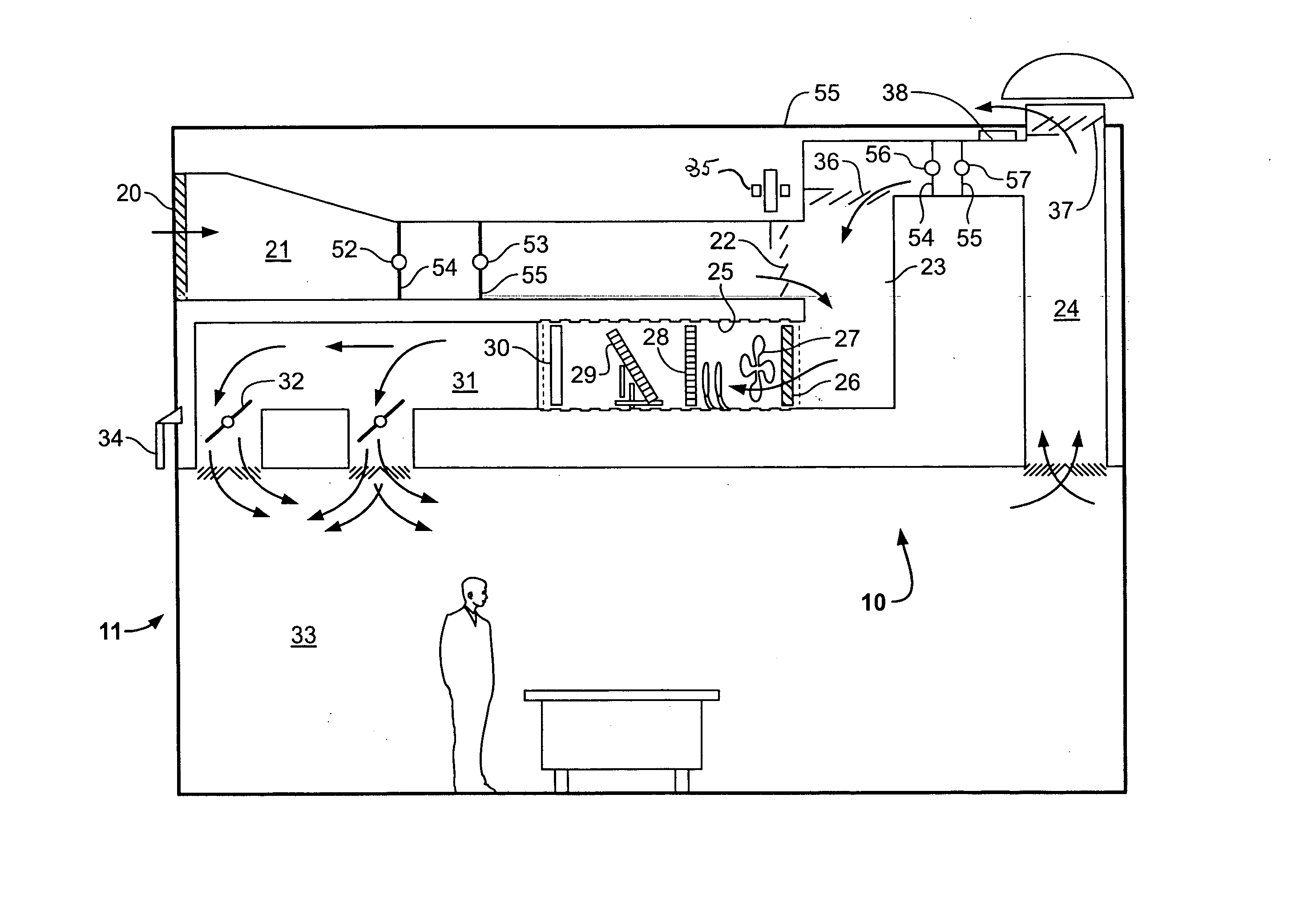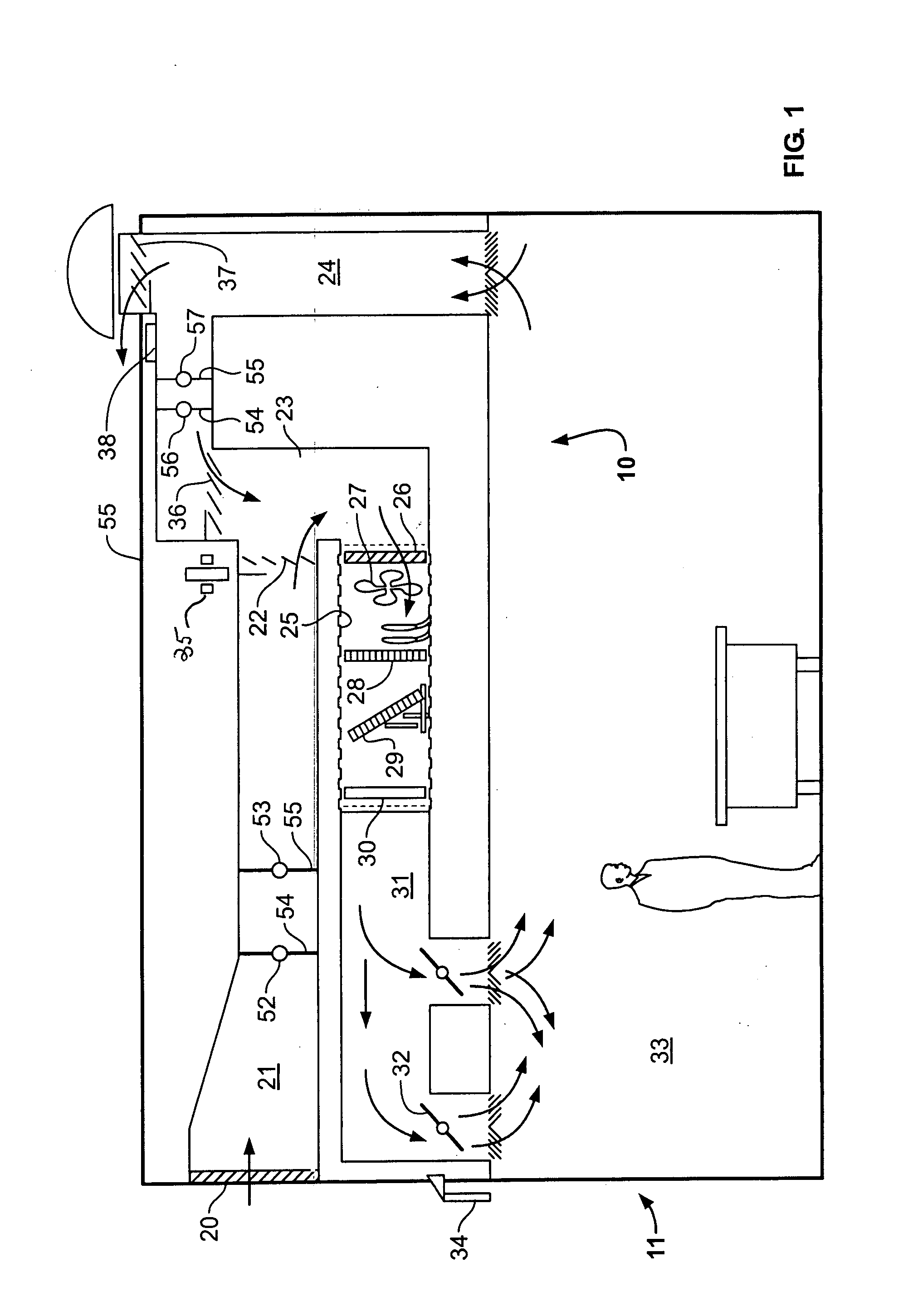Building protection system and method
a building protection and building protection technology, applied in the field of building protection systems and methods, can solve the problems of inadequate protection of commercial office buildings and areas outside commercial office buildings
- Summary
- Abstract
- Description
- Claims
- Application Information
AI Technical Summary
Benefits of technology
Problems solved by technology
Method used
Image
Examples
Embodiment Construction
[0017]FIG. 1 is a diagram of building 11 that shows typical components of conventional heating, ventilation and air conditioning (“HVAC”) system 10 to which sensors (also referred to as sensor systems) have been added in outdoor air inlet duct(s) and return air duct(s) in accordance with one or more embodiments of the present invention. As shown in FIG. 1, typical components of (“HVAC”) system 10 include: (a) outdoor air intake 20; and (b) inlet air duct 21 that leads to outdoor air damper 22—outdoor air damper 22 is capable of closing off inlet air duct 21. When outdoor air damper 22 is open, an outside air stream flows into economizer 23 where it is mixed with a building return air stream from return air duct 24 of building 11. As is well known to those of ordinary skill in the art, the outside air stream and the building return air stream are mixed in economizer 23 to reduce mechanical cooling or heating of the outside air stream, as well as, to maintain a minimum level of fresh ...
PUM
 Login to View More
Login to View More Abstract
Description
Claims
Application Information
 Login to View More
Login to View More - R&D
- Intellectual Property
- Life Sciences
- Materials
- Tech Scout
- Unparalleled Data Quality
- Higher Quality Content
- 60% Fewer Hallucinations
Browse by: Latest US Patents, China's latest patents, Technical Efficacy Thesaurus, Application Domain, Technology Topic, Popular Technical Reports.
© 2025 PatSnap. All rights reserved.Legal|Privacy policy|Modern Slavery Act Transparency Statement|Sitemap|About US| Contact US: help@patsnap.com



